Cause Effect Continuity First Graders Timelines
Cause-and-effect is one of those basic concepts that can really deepen a reader's understanding of a text, fiction or nonfiction. These cause-and-effect anchor charts help you introduce the concept to students, then expand on that knowledge to improve reading comprehension. Choose a few to try with your class!
1. Start with the basics
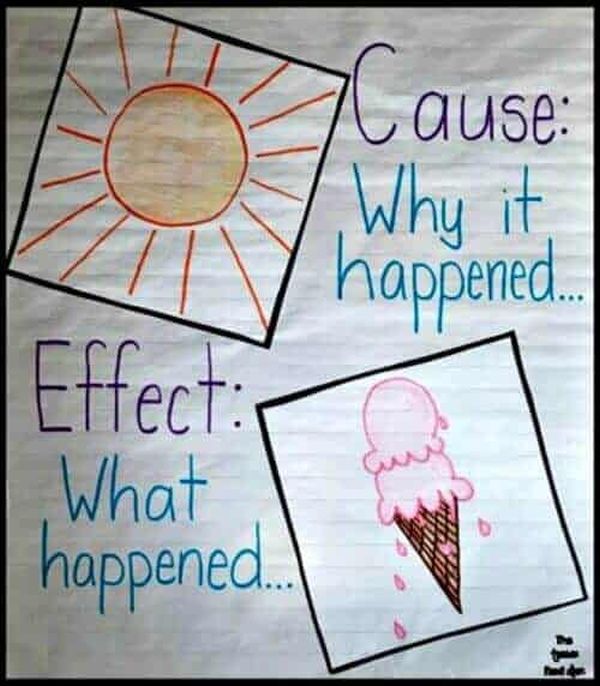
Introduce cause-and-effect with a very basic chart. Define the two terms, and provide a clear example, like the sun melting ice cream.
Source: Literacy Ideas for Teachers and Students
2. Provide more examples
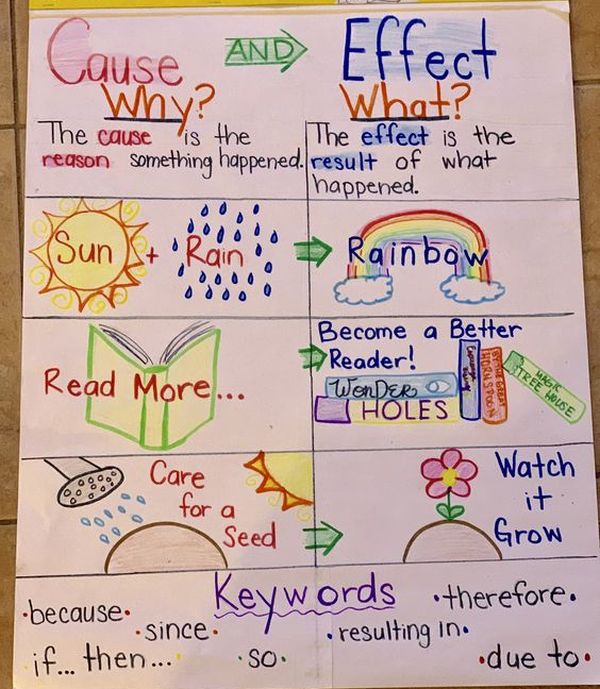
The more examples you can provide, the better. Have students help you come up with more to add to your chart.
Source: Nicole Marshall/Pinterest
3. Look for clue words
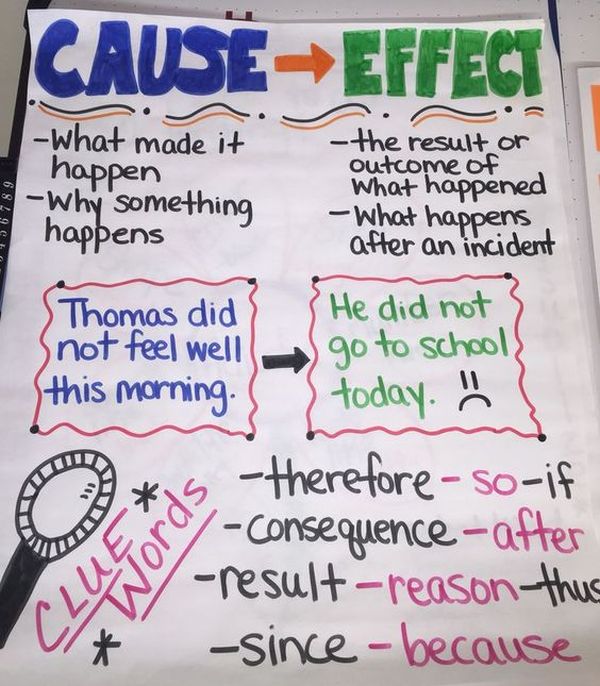
Clue words like "therefore," "as a result," and "because" can help students find the causes in the text they're reading. But be sure to note that clue words aren't always there, so they shouldn't rely on them completely.
Source: Jennifer Findley/Pinterest
4. Make the connection
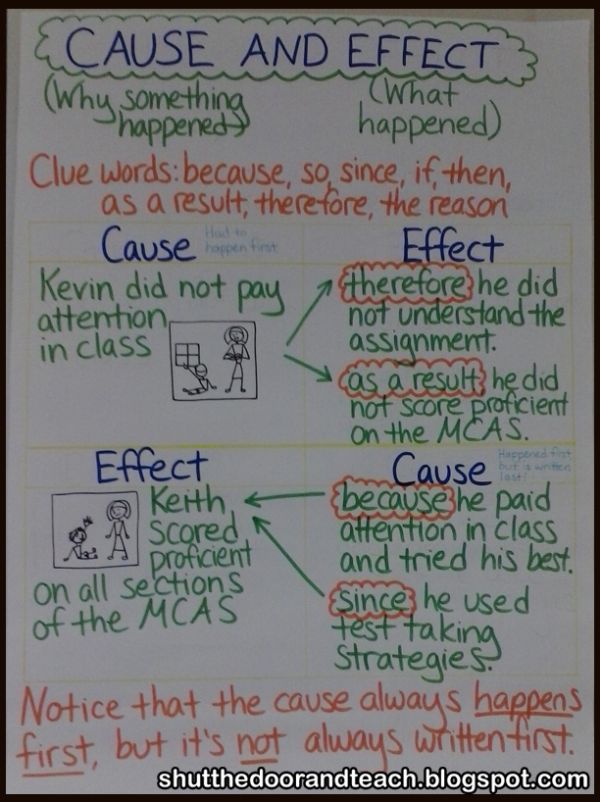
Once you've introduced clue words, take the time to use them in sentences so kids can see them in action.
Source: Shut the Door and Teach
5. Brainstorm more clue words
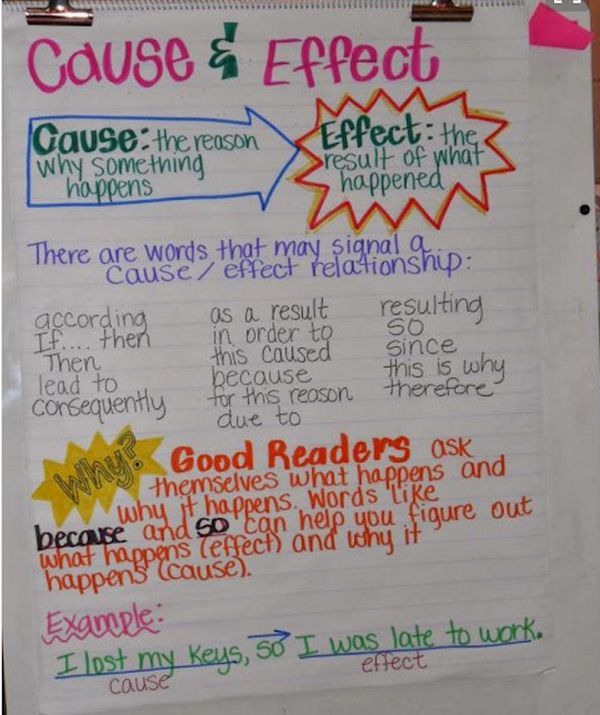
Ask your students to help you come up with more clue words. Encourage them to use them in sentences or find examples in books they're reading.
Source: Clue Words/ELA Anchor Charts
6. Remember that cause may not appear first
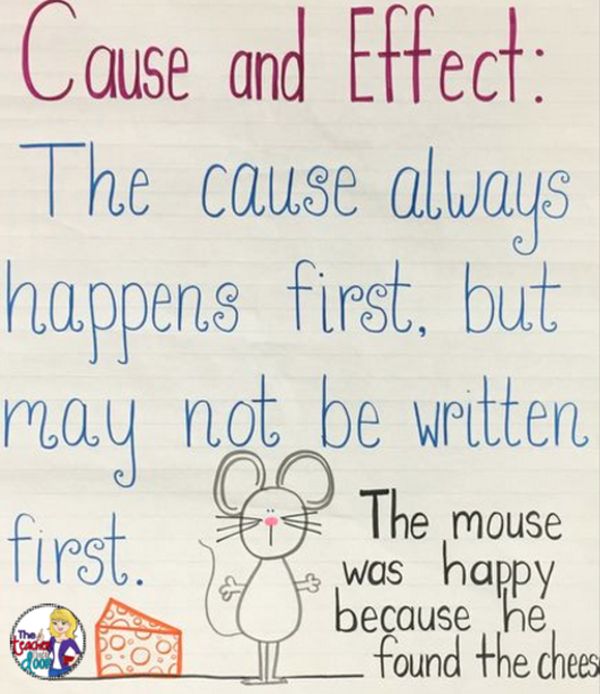
Even though cause always happens before effect, authors may not write it that way. This can be a tricky concept for some kids, so this is one of those cause-and-effect anchor charts that seems simple but is very important.
Source: Cause Happens First/ELA Anchor Charts
7. Use lots of arrows

You'll notice that most cause-and-effect anchor charts use lots of arrows. These help kids recognize the fact that causes come before effects, even if it's not written that way in the text.
Source: 2nd Grade Superheroes
8. Explore the chain of events
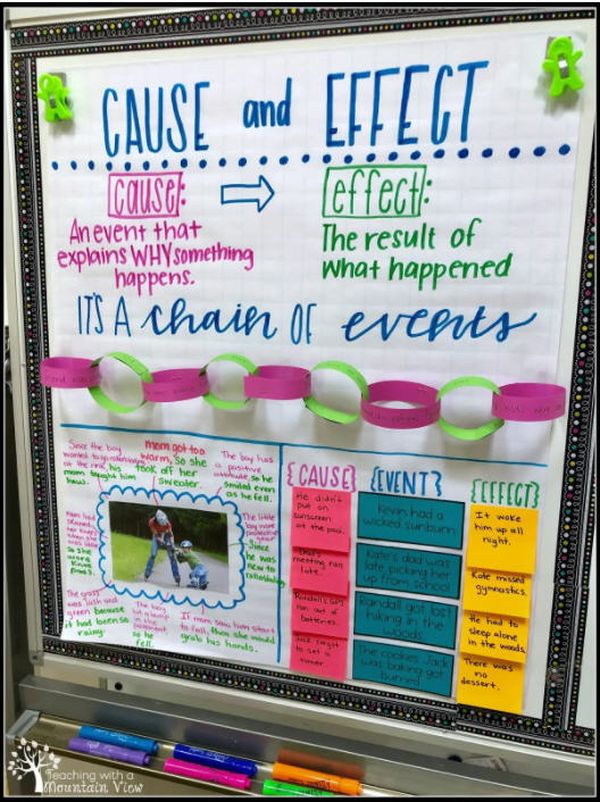
Cause-and-effect is part of a larger chain of events. We love this clever chart that uses a paper chain to help students make that connection.
Source: Teaching With a Mountain View
9. One cause can have many effects
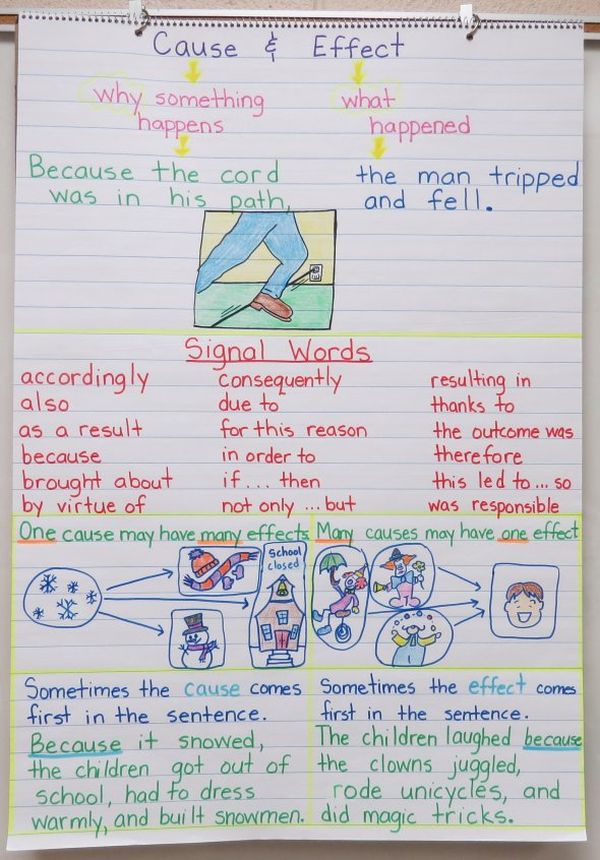
One event (cause) can have a lot of effects. This chart demonstrates examples of that. (You can also remind students that one effect can have multiple causes, too.)
Source: Book Units Teacher
10. Causes have different effects on different people
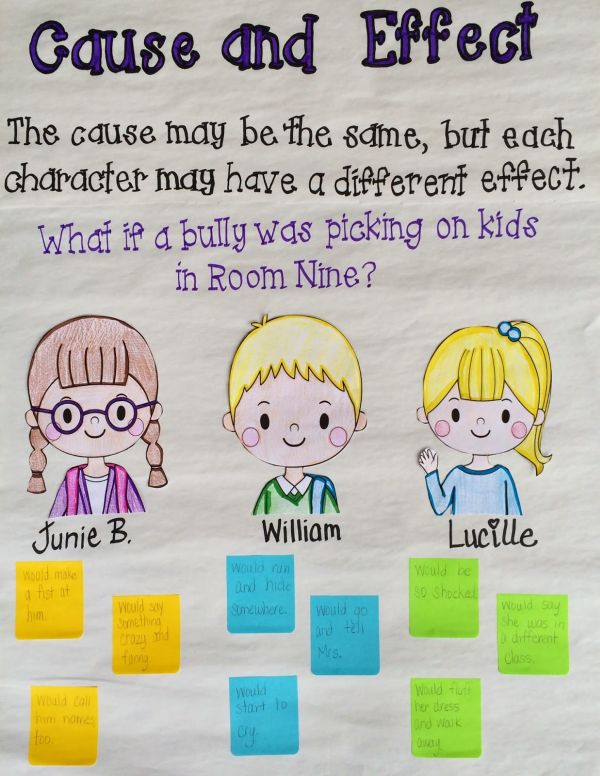
Not only can one cause have multiple effects, it can have very different effects on different people. Explore how one cause affects characters differently in a text.
Source: 2nd Grade Snickerdoodles
11. Fill in the blank
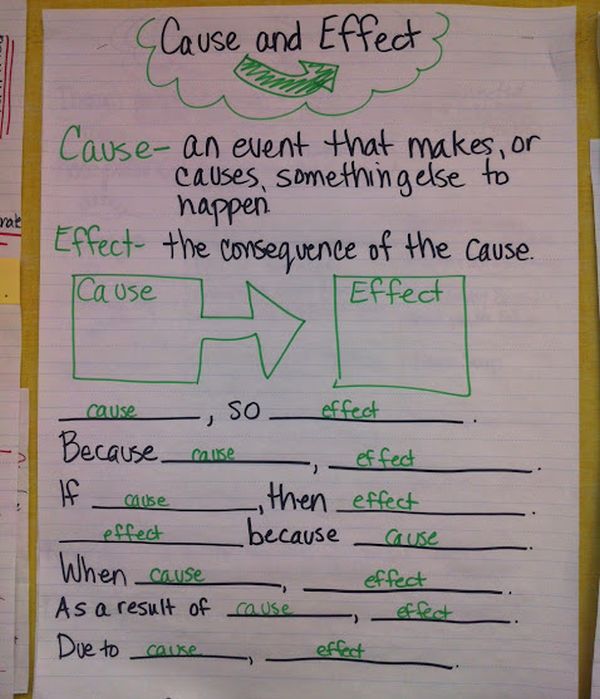
Turn clue words into fill-in-the-blank sentences to help students make connections more easily. You can have them write examples on sticky notes to add to the chart, too.
Source: Buzzing With Ms. B
12. Provide graphic organizer ideas
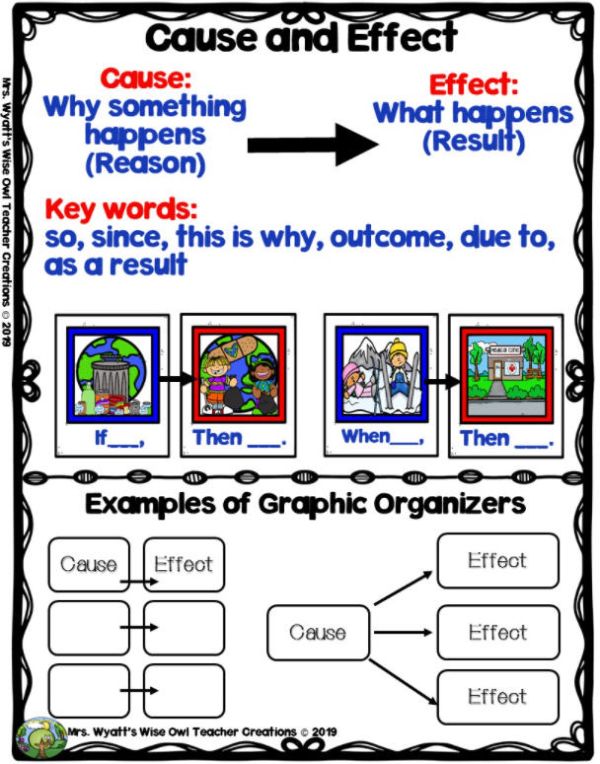
Graphic organizers provide an easy way for kids to arrange events in order and understand their connections. Download this anchor chart for free at the link.
Source: Mrs. Wyatt's Wise Owl Teacher Creations
13. Explore cause and effect in action

Choose a book students know well, then have them add causes and effects from the book to an anchor chart using sticky notes.
Source: Around the Kampfire
14. Be creative to get their attention
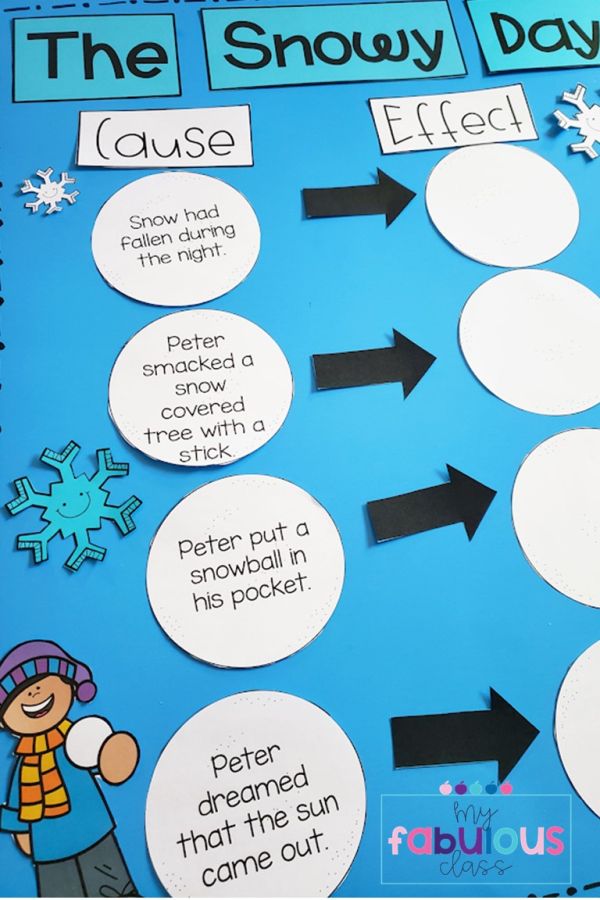
How cute is this snowball chart for The Snowy Day? It's sure to draw kids' attention and help them remember how cause-and-effect works.
Source: My Fabulous Class
15. Don't forget real-life cause and effect
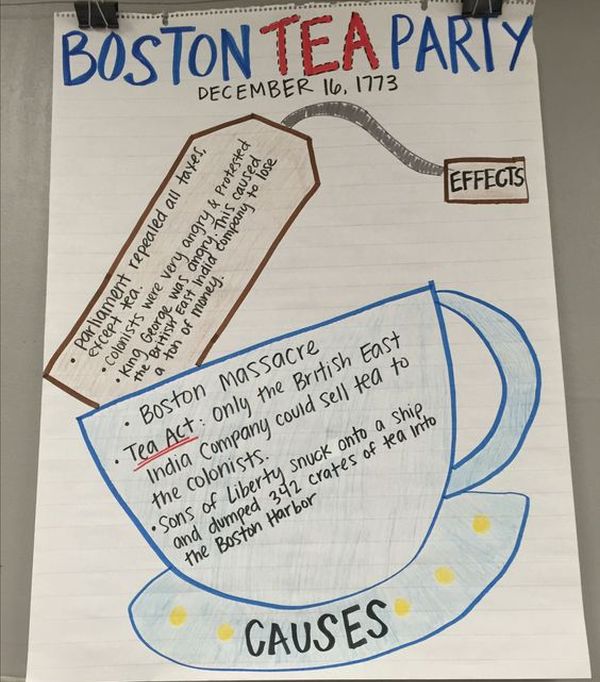
Cause-and-effect plays a huge role in our everyday lives. Map out the relationships between them in every topic you study.
Source: Katie Shaw/Pinterest
BONUS: Affect vs. Effect
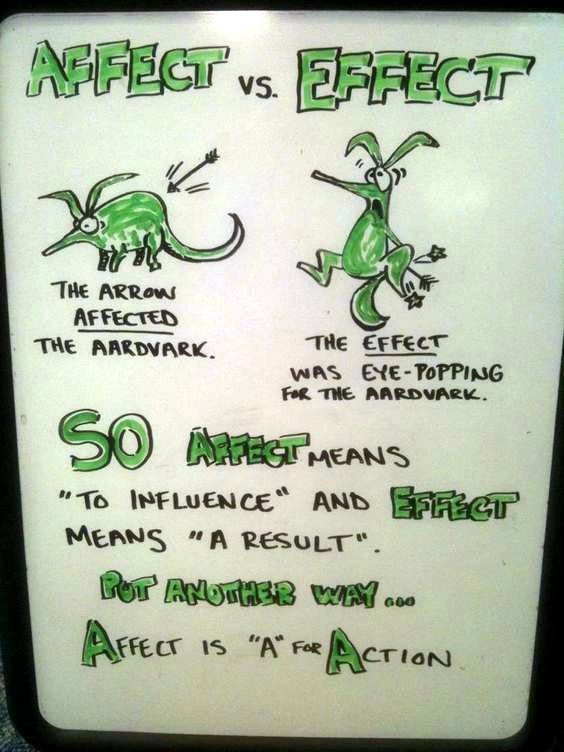
This oh-so-tricky usage question is bound to come up when you start writing about cause-and-effect. The easiest way to remember is that "A" is for action: "affect" is a verb, while "effect" is a noun.
Source: JoEllen McCollough/Pinterest
Looking for more ideas? Try these 40 anchor charts that nail reading comprehension .
Plus, get all the latest teaching tips and ideas straight to your inbox when you sign up for our free newsletters!

Source: https://www.weareteachers.com/cause-and-effect-anchor-charts/